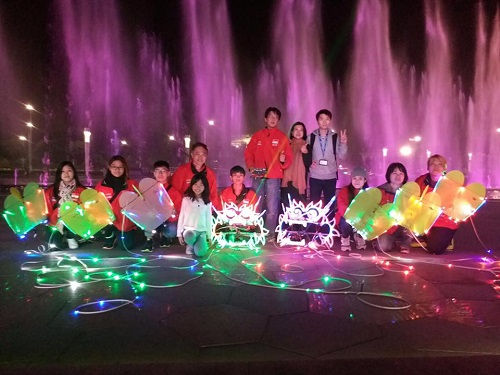An RC kite is pretty much what it sounds like. That is, a kite-like aircraft fitted with RC (radio control) receiver and pulled through the air with a propeller. In structure, it has a lot in common with kites and yet it is flown around like an RC plane. The man behind the concept is Mr Michael Lim from Singapore. Mr. Lim was formerly a jewelry designer but now finds it hard to drag himself away from further research and development of these amazing little flying machines!
Singapore is a crowded city-state-island in South-East Asia, with an enthusiastic and growing crowd of RC kite fliers. In typical Singapore fashion, the scene is very organized with simulator training, a ranking system for fliers, and scheduled events.
So what exactly can a radio-controlled kite do? It can…
- float around like a glider, with the motor idling
- perform all the basic aerobatic maneuvers like a light aircraft
- ‘hang on the prop’ in hovering or very slow flight, nose high in the air
- zip around pylons like the Red Bull racers
I should add, only a well-trained pilot can do all the above!
The Best RC Kites Are Made In Singapore
That’s right, as of 2008, the good ones are the originals made in Singapore. The original and the best as they say. The first design was named the FireFly and emerged onto the market in the year 2000. This kite featured LED lights around its rim for night flying. The effect gave a lot of pleasure to both the fliers and those looking on.
2001 saw the next generation of kites, named Golden Ingot. But Mr. Lim didn’t rest, finally bringing out the popular Pro III which is the current entry-level kite. The original colored-LED lights idea has persisted, making night flying a big part of the RC kite phenomenon.
Other kites have been developed too, for specific characteristics. For example, the Scorpion pylon racer.
The frame and RC housing of the kites are made from carbon fiber. That’s the same material that is used for the very best spars in ordinary kites. Strong and yet very light. The sails use polyester canvas which resists scratches and tears quite well.
In 2008, people’s videos of flying events and gatherings are increasing awareness of the RC kite. It’s fascinating to watch real precision aerobatics and also the very slow flight capability of RC kites.
To give you some idea of the size and weight of these kites, here are a few basic specs on the Pro III:
- 680mm x 540mm x 55mm in size
- kite itself weighs 45 grams
- kite ready-to-fly weighs 260 grams
Some Thoughts On The RC Kite Scene
My first reaction to reading about this whole scene, and seeing some videos? That really looks like fun! With miniaturization as advanced as it is now, something like this had to happen sooner or later. Also, flying indoors takes away a lot of the limitations that the weather imposes on outdoor RC flying.
An RC kite works fine outdoors too, as long as there is not too much wind.
I guess for some successful RC fliers, used to the noise and speed of powerful fuel-driven RC planes, these kites could seem a bit tame. A floating kite just doesn’t re-create the feeling of ‘flying an aircraft’ as a fuel-powered RC plane does.
At $600 for the starter kit, these are not toys. However, a remote control kite does appear flimsy and toy-like at first. Only after looking into it a bit more do you appreciate the achievements of those involved in developing this unique technology.
Kite or RC Plane?
The R C kite seems to have more in common with R C model aircraft than with normally tethered kites.
The construction is very kite-like on most designs, with the sail fabric stretched between a surrounding frame. This isn’t much like the well-known diamond kite in the West, but it does have something in common with a particular class of traditional Chinese kites. I’m talking about those kites that have molded bamboo spars and hard edges.
On the other hand, the vertical fin of the Pro III does look more like a model plane fin than the flexible keel of a kite.
In any case, everybody is calling these things RC kites, or air kites so kites they are!
Tim Parish and his family have rediscovered the joys of kite flying. They blog new pages on their my-best-kite.com website and also research the kiting world. This site will introduce you to many kinds of kites and kite flying activities, including RC kites of course!

